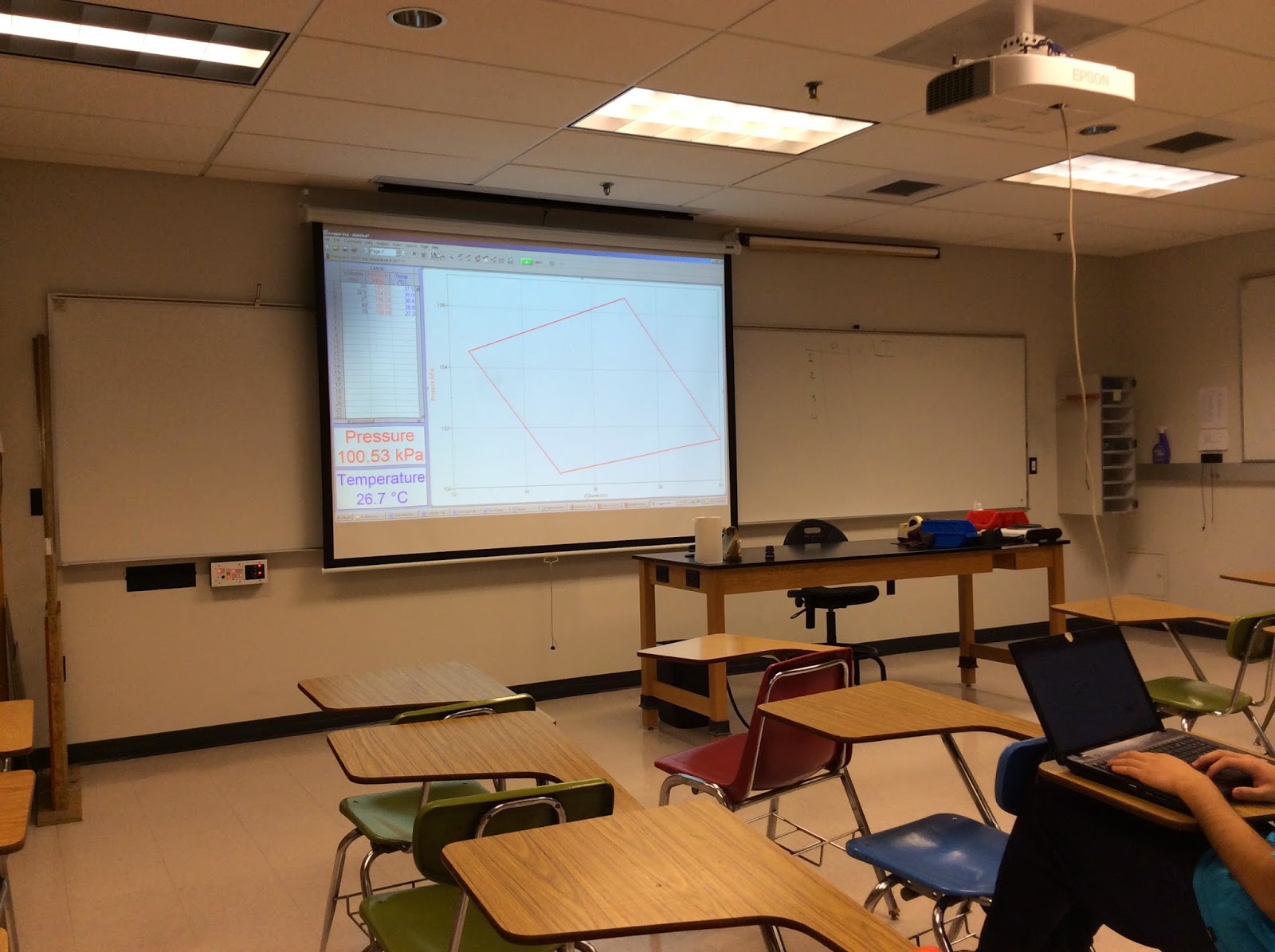At the beginning of class, we simulate how the heat engine works.
This heat engine works because it has temperature difference.
If the cold side is on the left and hot side on the right, the heat engine will move counterclockwise.
If the hot side is on the left and cold side on the right, the heat engine will move clockwise.
The difference of temperature can make this engine work. It also works vice versa. It the engine has some work, it will cause a temperature difference.
It will make the two side has different temperature. Which side is colder and which side is hotter depends on whether it is clockwise of counterclockwise.
We use work to generate temperature.
2. The Mass Lifter Heat Engine
The mass lifter heat engine includes isochoric, isobaric, isothermal and adiabatic processes. In this lab, a syringe, flask and tubes are set up like in the picture.
The entire lab has four steps:
1. The mass will be placed on the syringe.2. The flask will be moved from the cold water to the hot water.3. The mass will be removed.4. The flask will be placed back into the cold water.
Set UP:
This is the PV graph, the area of it is the work it has done.
First, we need to calculate the total volume of the system.
This is how to solve for the area (work).
For step 1 (A -> B) the volume decreases, the pressure increases and the temperature remains the same. Due to the constant temperature, it is an isothermal process.
For step 2 (B -> C), it is an isobaric process since no heat exchanges. The temperature and volume increases.
For step 3(C -> D), it is an isothermal process since temperature is constant.
For step 4 (D -> A), it is an isobaric process since no heat exchanges. The temperature and volume decreases.
Typical Heat EngineA heat engine is any device that converts heat energy in to useful macroscopic work.
It includes some of the four process (or all of them): isobaric, isochoric, isothermal, and adiabatic. There are four stages in the engine cycle with a spark plug. It has intake stroke, compression stroke, power stroke and exhaust stroke.

Qh= Heat Input to the Heat Engine.
Ql= Heat Exhausted from the Heat Engine.
Conclusion:
In today’s class, we learn how a heat engine works. The difference in temperature can make a heat engine work. However, it is not very efficiency, especially in a hot weather. We learn the 4 strokes a heat engine has: intake stroke, compression stroke, power stroke and exhaust stroke. We also learn how to do the calculation in a cycle.










No comments:
Post a Comment